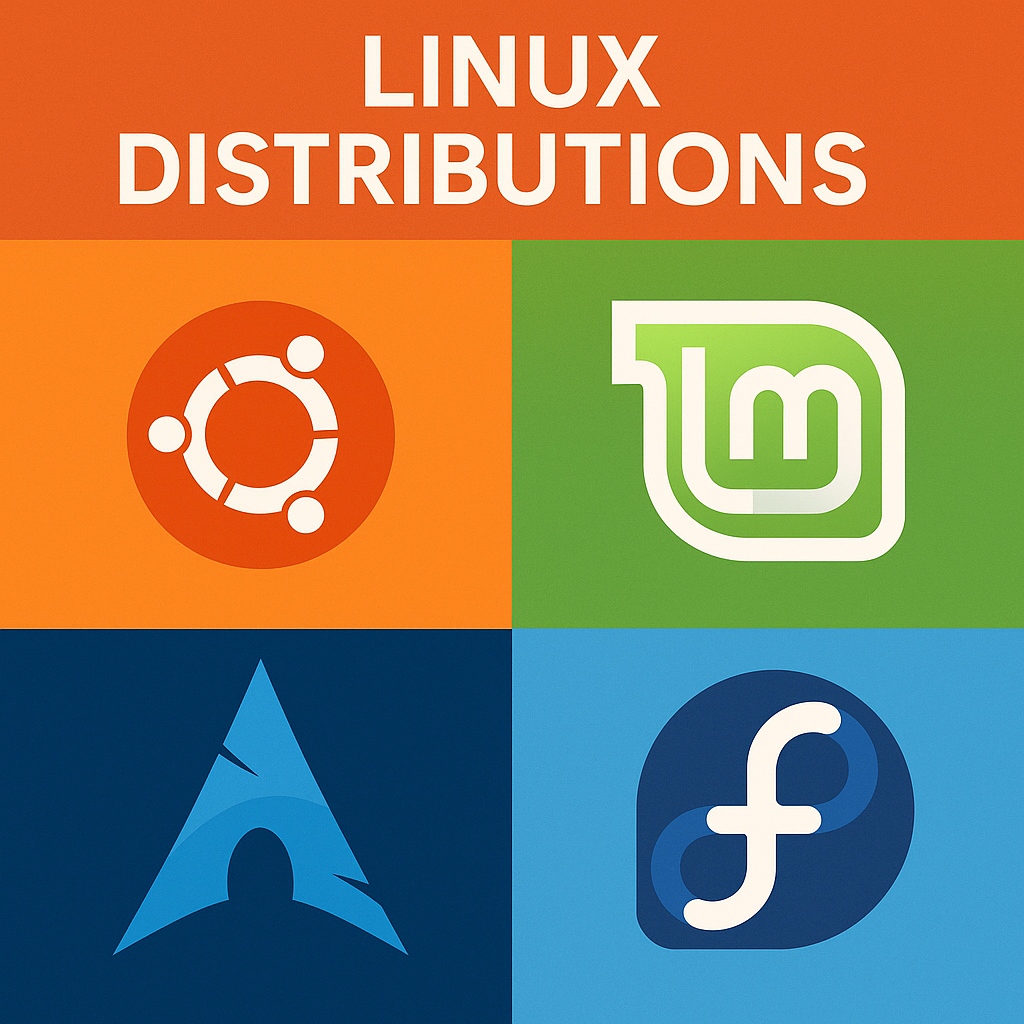Understanding Linux Distributions: Differences, Use Cases, and Recommendations

Linux is not just an operating system — it’s a diverse ecosystem made up of hundreds of different distributions (distros), each tailored for different use cases, user levels, and philosophies. Whether you’re a complete beginner or a seasoned system administrator, choosing the right Linux distro can shape your experience dramatically. Let’s dive into what makes them different, what to choose, and what else you should know.
What is a Linux Distribution?
A Linux distribution is a complete operating system built on the Linux kernel, bundled with software, a package manager, system tools, and usually a graphical user interface (GUI). The differences lie in default settings, software repositories, package management systems, target audiences, and overall philosophy.
Beginner-Friendly Distributions
If you’re new to Linux, you’ll want a system that is:
- Easy to install
- User-friendly
- Has good community support
- Compatible with your hardware
Top beginner-friendly distros:
- Ubuntu – The most popular choice for beginners. Easy installation, huge user base, regular updates, and software availability. Based on Debian.
- Linux Mint – Based on Ubuntu, but with a traditional Windows-like desktop. Great for users switching from Windows.
- Zorin OS – Designed to look and feel like Windows or macOS depending on your choice, with a modern and polished UI.
- Pop!_OS – Developed by System76. Geared toward both productivity and gaming, with excellent hardware compatibility.
Distributions for Advanced Users
Experienced users might prefer more control, customization, or minimalism. These distributions offer power and flexibility, but come with a steeper learning curve.
Popular choices:
- Arch Linux – DIY from the ground up. Highly customizable, with cutting-edge software. Great documentation via the Arch Wiki.
- Gentoo – Compiled from source, optimized for your specific hardware. For users who want full control.
- Debian – Very stable and widely used in servers. The base of many other distributions.
- Slackware – One of the oldest distros. Simplicity and purity over automation.
What About Package Managers?
Different distros use different package management systems, which handle software installation and updates. Here’s a breakdown of the most common ones:
| Distro Base | Package Manager | Package Format |
|---|---|---|
| Debian/Ubuntu | APT | .deb |
| Red Hat/Fedora | DNF/YUM | .rpm |
| Arch Linux | Pacman | .pkg.tar.zst |
| Gentoo | Portage | Source-based |
| Universal (any) | Flatpak, Snap, AppImage | Sandbox formats |
Which is easiest?
For beginners, APT (used by Ubuntu, Mint, etc.) is often the most straightforward due to great documentation and GUI frontends like Synaptic.
Do All Linux Programs Work on Every Distro?
Not always. While many programs are cross-compatible, package availability, dependencies, and versions vary. Universal formats like Flatpak, Snap, and AppImage improve compatibility by running sandboxed applications across distros.
Advanced users often compile software from source if their distro lacks a packaged version.
Security Considerations
Most Linux distributions are inherently more secure than proprietary systems due to:
- Open-source code (auditable by anyone)
- Regular security updates
- User privilege separation
However, there are security-focused distros:
- Qubes OS – Uses virtualization for strong compartmentalization.
- Tails – Live system focused on anonymity and privacy.
- Kali Linux – For penetration testing and security auditing, not general use.
Still, your distro’s default settings, update frequency, and included software affect overall security.
Can You Buy a Computer With Linux Pre-installed?
Yes — though it’s less common than Windows-based machines. Some options include:
- System76 – US-based company selling laptops and desktops with Pop!_OS or Ubuntu.
- TUXEDO Computers – Germany-based, highly customizable Linux hardware.
- Dell XPS Developer Edition – Comes with Ubuntu.
- Purism Librem – Focus on privacy and open-source hardware.
You can also install Linux yourself on most modern hardware (just check compatibility first).
Other Notable Linux Topics
1. Linux for Gaming
Thanks to Steam Proton, Lutris, and Wine, gaming on Linux has improved drastically. Distributions like Pop!_OS and SteamOS are optimized for gaming.
2. Linux for Servers
Distributions like Debian, Ubuntu Server, CentOS Stream, and Rocky Linux dominate web and enterprise servers due to their stability and long-term support.
3. Linux on Raspberry Pi
Lightweight distros such as Raspberry Pi OS, DietPi, or Arch ARM bring Linux to IoT and DIY projects.
4. Linux Desktop Environments
Each distro can offer multiple desktop environments like GNOME, KDE Plasma, XFCE, or LXQt — each with a unique look, performance level, and customization depth.
Conclusion: Which Linux Distro Is Best for You?
There’s no one-size-fits-all answer. It depends on your experience level, goals, and hardware. Here’s a quick summary:
- Beginner → Ubuntu, Mint, Zorin OS
- Tinkerers/Power Users → Arch Linux, Gentoo
- Privacy-conscious → Qubes, Tails
- Gamers → Pop!_OS, SteamOS
- Server use → Debian, Ubuntu Server, Rocky Linux
The best way to learn Linux is simply to try it. Many distros offer Live USB modes, letting you test-drive them before installing. Dive in and explore!
